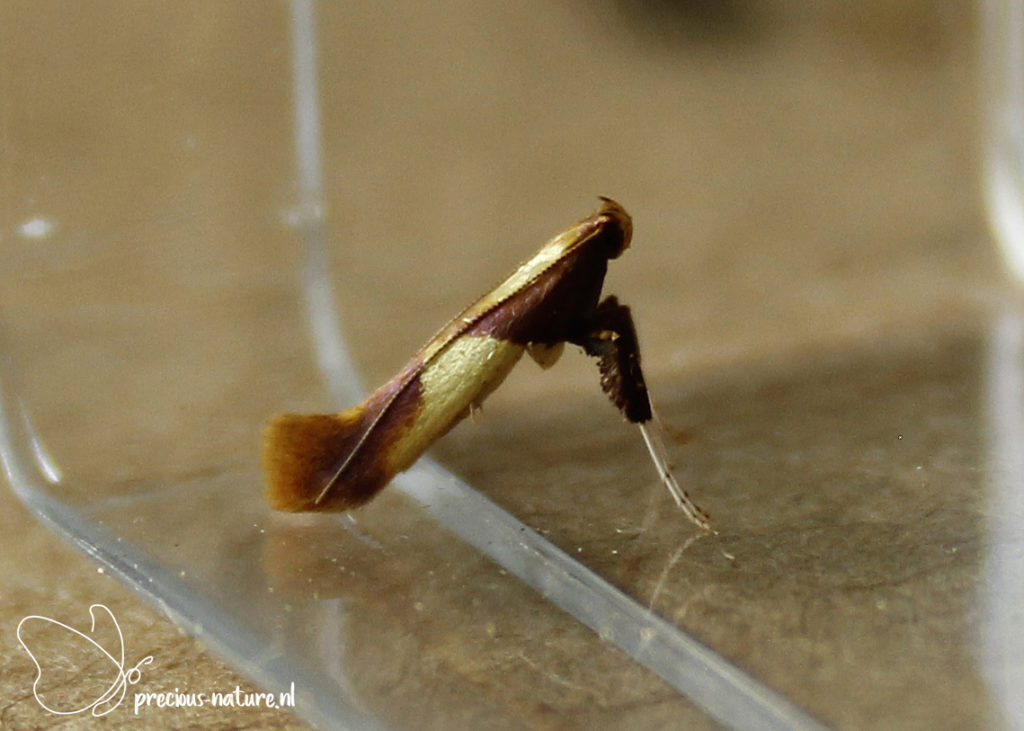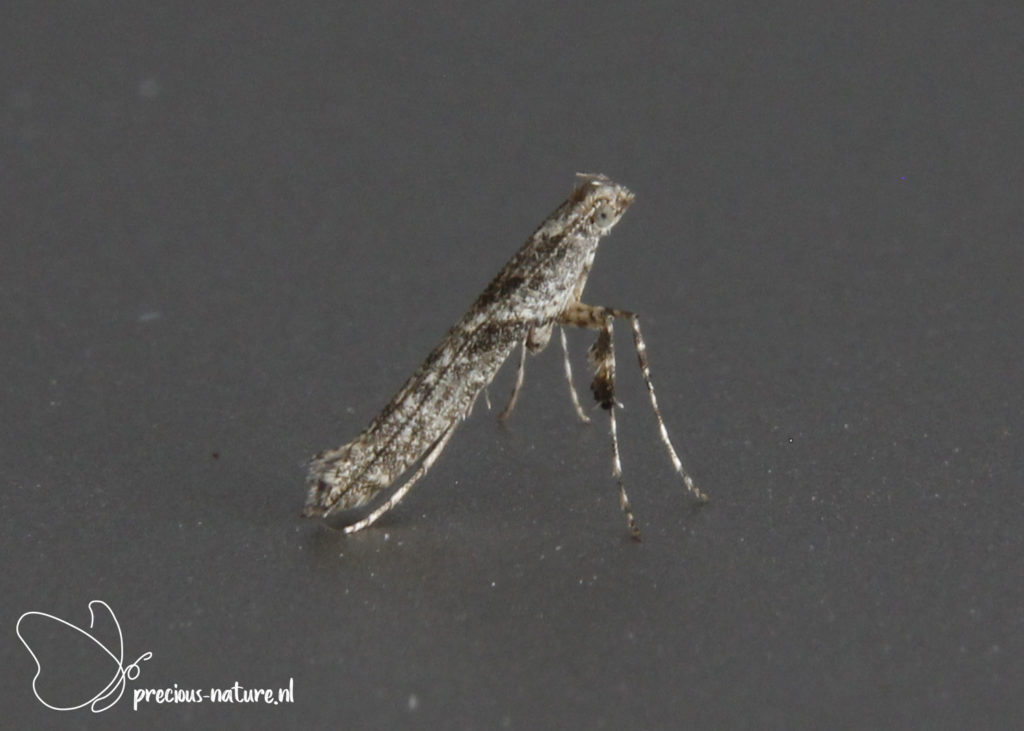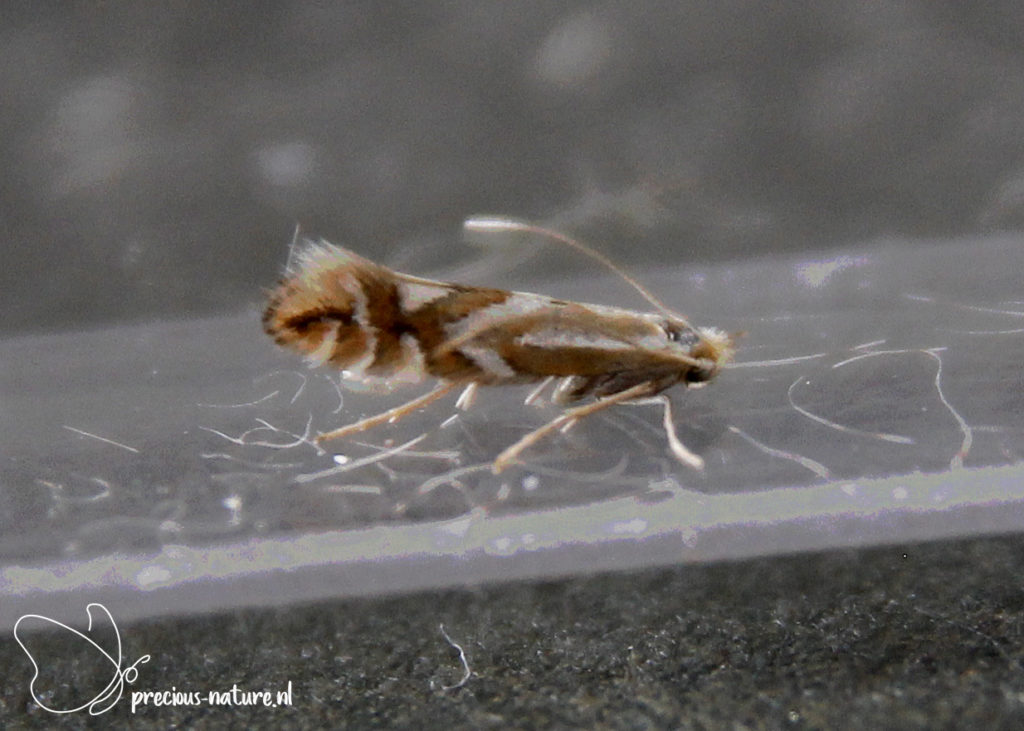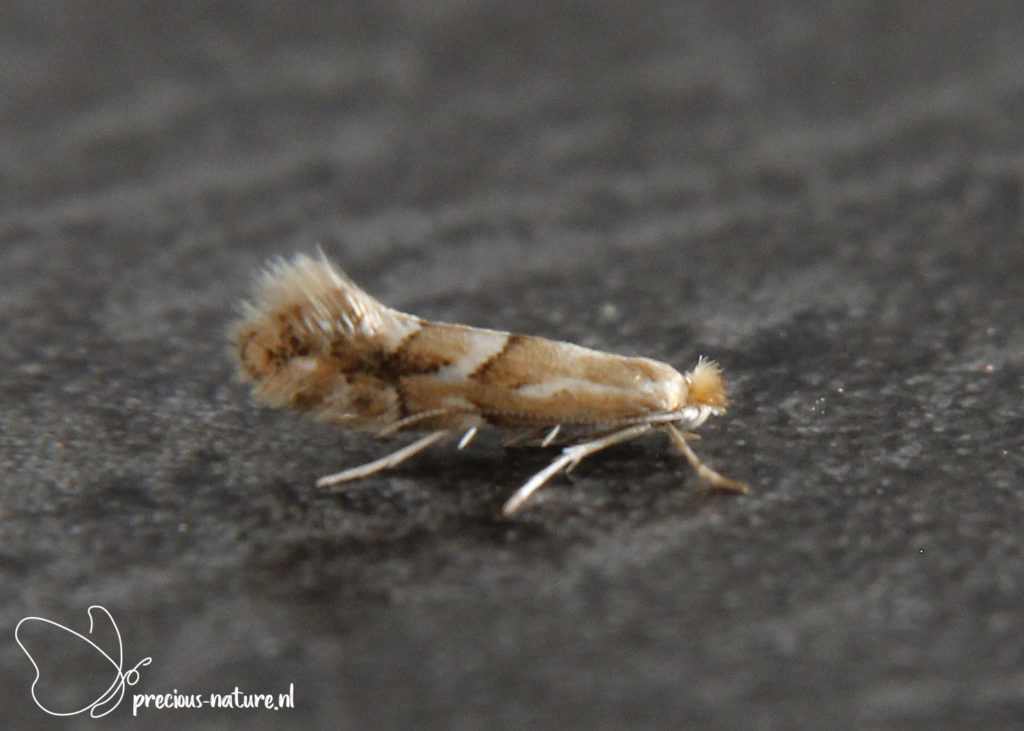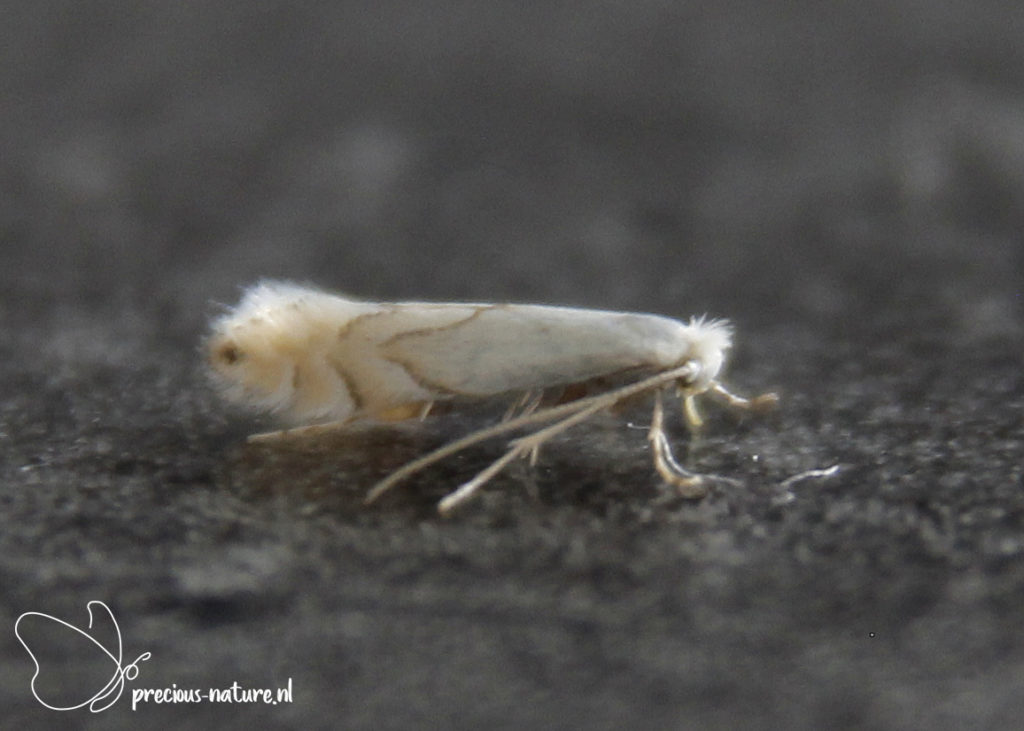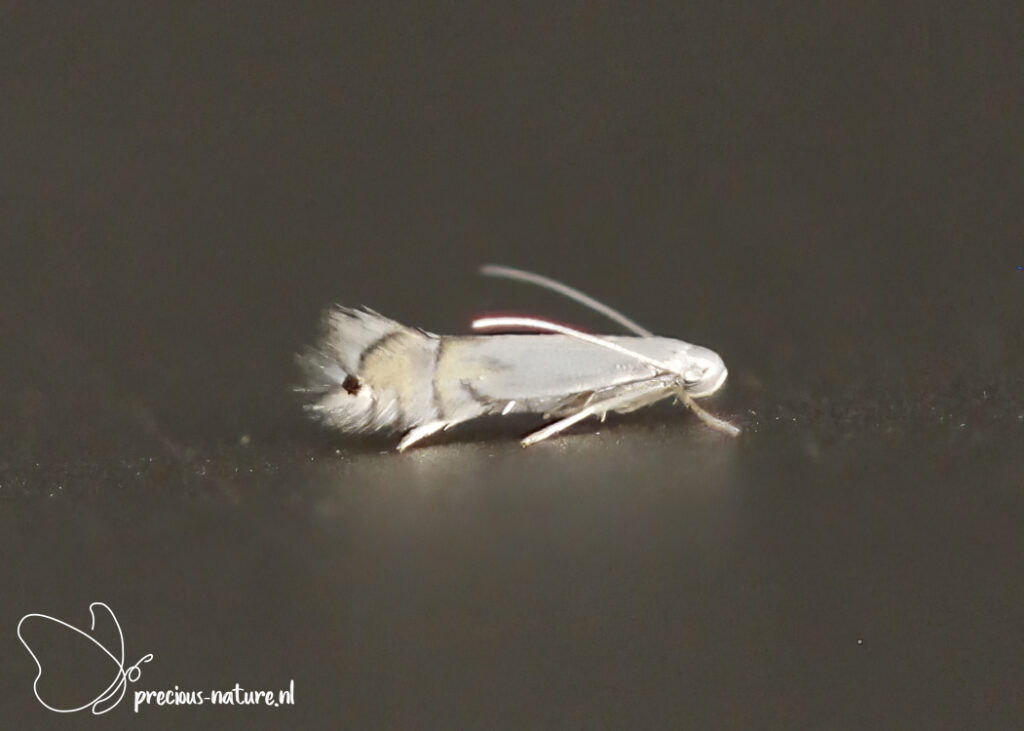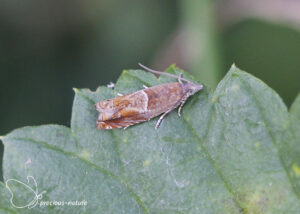The Leaf Blotch Miner Moths (Gracillariidae) hold their wings resting in a roof shape at a steep angle. All species are small or very small, with a forewing length of 2 – 8.5 mm. They have a well-formed tongue and long antennae. The front legs are longer so that they stand on a raised leg. The main characteristic of this family is that they have two metamorphoses. The larvae hatching are legless and very flattened. At this stage, they mine in the epidermis of the plant. After a few moults, the larva develops legs and a cylindrical body. After another few moults, the pupal stage follows and then the transition to a moth.
Subfamily: Gracillariinae
Genus: Caloptilia
Yellow-triangle Slender – 2019 (NL)
(NCBI-index: 909820)
With its pale reddish-brown forewing with purple reflections, the Yellow-triangle Slender (Caloptilia alchimiella) is easy to recognise. Sometimes, it is still confused with the New Oak Slender (Caloptilia robustella). A yellow triangular spot extending along the costa is visible halfway down. The flying period in one generation is from May to August, and the wingspan is 10-13 mm. Host plant: Oak. Dutch name: Goudvleksteltmot. Frisian name: –
Flying period:

Subfamily: Gracillariinae
Genus: Caloptilia
Feathered Slender – 2021 (NL)
(NCBI-index: 1.594242)
The underside of the palp of the Feathered Slender (Caloptilia cuculipennella) is slightly tufted. The forewing colour is whitish, with brown markings, usually showing as three incomplete transverse lines. The transverse line on 1/3 of the wing is especially noticeable. The fringes are alternately coloured white and brown, and the Feathered Slender stands high on its front legs when resting. The wingspan is about 12 mm, and the flight period is in one generation from September to May. Host plant: Privet, Ash. Dutch name: Grauwe steltmot. Frisian name: –
Flying period:

Subfamily: Lithocolletinae
Genus: Phyllonorycter
Beech Midget – 2021 (NL)
(NCBI-index: 199051)
A clear example that some of the smaller moths are the most beautiful certainly applies to the Beech Midget (Phyllonorycter maestingella). This tiny moth features an intricate pattern of orange-brown, white, and black markings and is easily overlooked. The name ‘folding moth’ refers to the mines the larvae make in a leaf that look like folds. The flying period in one generation is from April to June, and the wingspan is 7-9 mm. Host plant: Beech. Dutch name: Beukenvouwmot. Frisian name: –
Flying period:

Subfamily: Lithocolletinae
Genus: Phyllonorycter
White Oak Midget – 2021 (NL)
(NCBI-index: 199039)
I increasingly catch micro moths with small plastic boxes to identify them at home and to take good photos. The White Oak Midget (Phyllonorycter harrisella) is also one of them. The forewing is elongated, predominantly white, and closer to the apex, pale orange-brown. Three thin brown lines run diagonally from the costa and two thin brown stripes from the dorsum towards the tip of the wing. A black dot can be seen at the apex. The flight period is two generations, from April to June and from July to September. The wingspan is 7-9 mm. Host plant: Oak. Dutch name: Witte eikenvouwmot. Frisian name: –
Flying period:

Subfamily: Phyllocnistinae
Genus: Phyllocnistis
Kent Bent-wing – 2023 (NL)
(NCBI-index: 1.482597)
For the grass miner moths of the genus Phyllocnistis, examining the larvae and the mines on a leaf helps distinguish between the different species. However, that is not always possible. Especially when the moth approaches the light, lands on your canvas, or finds a spot in a moth trap. After much study, I finally came to the Kent Bent-wing (Phyllocnistis xenia) because of the time of year and its occurrence in the country’s North. The forewing is shiny white, and a white band separates two yellow spots near the wing tip. Four dark brown stripes are running from the wing’s leading edge inwards, one extending to the inner edge. Along the rear edge, in addition to a dark brown line, is a striking dark brown spot. The flight period spans two generations, from June to September, and the wingspan measures 6-7 mm. Host plant: Poplar. Dutch name: Printplaatmot. Frisian name: –
Flying period:


